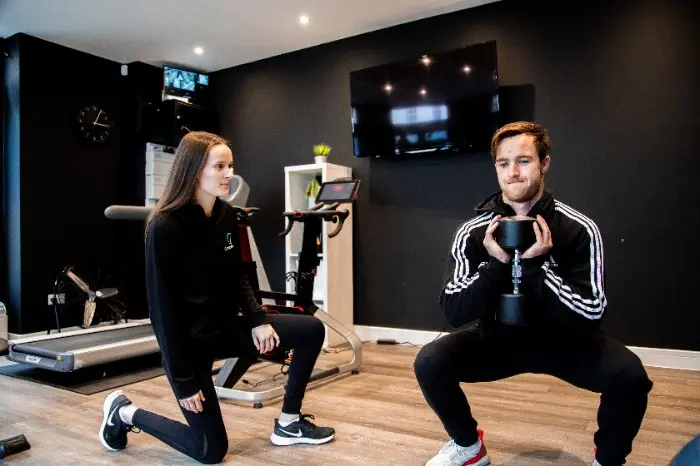Fitness is important at every stage of life, but not every workout suits every body. If you’re managing joint pain, recovering from injury, or simply prefer a gentler routine, low-impact exercises are the perfect solution. They improve strength, mobility, and cardiovascular health—without placing excess stress on your knees, hips, or spine. This article covers effective low-impact workouts that protect your joints while keeping you active, strong, and pain-free.
What Are Low-Impact Exercises?
Movement That’s Gentle on the Body
Low-impact exercises are workouts that reduce the force exerted on your joints. Unlike running or jumping, they allow one foot to remain on the ground, minimizing pressure on knees, ankles, and hips. These exercises can:
- Improve mobility and flexibility
- Build strength safely
- Support weight loss and heart health
- Reduce the risk of injury
Ideal for beginners, seniors, overweight individuals, or anyone with sensitive joints.
Best Low-Impact Cardio Workouts
Get Your Heart Pumping Gently
Cardio doesn’t have to mean jumping. These low-impact movements elevate your heart rate without the strain:
- Marching in place – Great warm-up and gentle cardio
- Step touches – Side-to-side steps with arm swings
- Low-impact dancing – Slow tempo Zumba or aerobic routines
- Elliptical machine (if available) – Smooth motion, no pounding
- Cycling (stationary or outdoor) – Supports joints while building leg strength
- Swimming or water aerobics – Full-body workout with zero joint stress
Aim for 20–30 minutes, 3–5 times a week.
Joint-Friendly Strength Training
Build Muscle Without Strain
Strength training improves bone density and joint stability. These low-impact options work your muscles safely:
- Wall push-ups – Easy on wrists and shoulders
- Glute bridges – Strengthens core and lower back
- Chair squats – Builds leg strength without deep bending
- Resistance bands – Add gentle tension to upper and lower body moves
- Seated leg lifts – Strengthen thighs without standing
Use slow, controlled movements. Focus on quality over quantity.
Gentle Flexibility and Mobility Exercises
Keep Joints Fluid and Pain-Free
Stretching and mobility exercises reduce stiffness and support better movement. Try:
- Cat-cow stretch – Eases spinal tension
- Neck and shoulder rolls – Relieves upper body tightness
- Hamstring stretch (seated) – Increases flexibility
- Child’s pose – Relaxes hips and lower back
- Ankle circles – Improves ankle mobility
Practice 5–10 minutes daily, especially after workouts or long sitting periods.
Beginner Low-Impact Routine (15 Minutes)
Full-Body Sample Workout
- Warm-Up (3 minutes)
- March in place
- Arm circles
- Side step taps
- Strength Circuit (8 minutes)
- 10 chair squats
- 10 wall push-ups
- 10 seated leg lifts (each leg)
- 10 resistance band rows
- Repeat 2x
- Stretch (4 minutes)
- Cat-cow
- Hamstring stretch
- Neck rolls
- Deep breathing
Perform this routine 3–4 times per week for safe, consistent progress.
Tips for Safe Low-Impact Workouts
Protect Your Body, Stay Motivated
- Use supportive shoes with cushioning
- Exercise on soft flooring like yoga mats or carpets
- Hydrate well before and after activity
- Avoid sudden movements or deep bends
- Listen to your body—adjust or rest if discomfort arises
Low-impact doesn’t mean low intensity. With proper form, these exercises still challenge your muscles and cardio system.
When to Choose Low-Impact Workouts
Ideal Scenarios
- Recovering from joint or muscle injuries
- Managing arthritis, osteoporosis, or chronic pain
- Starting fitness for the first time or after a long break
- Looking for recovery days between intense sessions
- Wanting a sustainable, long-term workout plan
Conclusion
Low-impact workouts offer a safe, effective, and sustainable way to stay fit without straining your joints. Whether you’re easing into a new fitness habit, managing pain, or simply want a gentler routine, these exercises keep your body strong, flexible, and energized. With consistency, you’ll build muscle, protect your joints, and improve overall health—all at your own pace.
FAQs
Can I lose weight with low-impact exercises?
Yes. When done consistently and paired with a balanced diet, low-impact workouts can burn fat and support weight loss.
Are low-impact exercises suitable for seniors?
Absolutely. They reduce injury risk while improving strength, balance, and heart health in older adults.
Do I need equipment for low-impact training?
No. Most movements use bodyweight. Light bands, chairs, or water bottles can add resistance without stressing joints.
How often should I do low-impact workouts?
Aim for 3–5 times a week, depending on your goals and energy level.
What’s the best time of day to exercise for joint health?
Morning exercise helps loosen stiff joints, while evening workouts can aid relaxation and reduce tension. Choose what feels best for your body.



